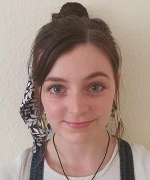About me
Since secondary school, I’ve been interested in diseases, their aetiology, and treatment. In pursuit of this interest, I went on to complete an Integrated Masters at the University of Sheffield in Biochemistry. In my final year research project, I used X-ray crystallography to structurally characterise a set of integral, methionine-binding proteins in Campylobacter jejuni. Throughout this year, I found that I really enjoyed using structural biological software, and became invested in tackling antibiotic resistance. Off the back of this project, I started looking for structural biology PhD projects that addressed the antibiotic resistance crisis. I was really lucky to find my current project at the University of York, a structural biology hub. I’m working with the Fascione lab to structurally and mechanistically characterise bona fide drug targets in Acinetobacter baumannii, a critical priority pathogen as listed by the WHO.
My research
Bacteria coat their surfaces with a plethora of sugars to aid in host colonisation. Roughly 40 years ago, a previously unseen sugar was discovered on the surface of Pseudomonas aeruginosa. Since then, this unusual sugar has been identified on the surface of multiple pathogenic multi-drug resistant bacteria, including highly virulent Acinetobacter baumannii strains. It has been proposed that presentation of this sugar prevents bacteria from being detected and destroyed by the host immune system, as well as contributing to bacterial motility, making it a bona fide antimicrobial target. Recently, the Fascione lab identified a novel enzyme capable of synthesising these unusual glycoconjugates in Acinetobacter baumannii, the first of its kind.
In this project, I aim to fully characterise this novel enzyme with an interdisciplinary toolkit comprising structural, synthetic, and kinetic techniques. From here, novel inhibitory compounds with antimicrobial activity may be identified, potentially opening up a new avenue for tackling the looming antibiotic resistance crisis.
Contact
LinkedIn: www.linkedin.com/in/abby-walklett

